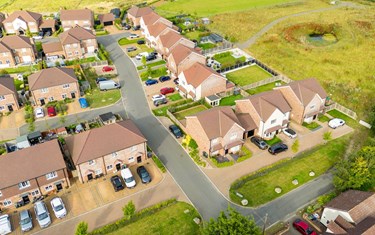 Professor John Sturzaker FRTPI is the Research Lead for Rural Planning the 2020s, the RTPI's latest research report.
Professor John Sturzaker FRTPI is the Research Lead for Rural Planning the 2020s, the RTPI's latest research report.
Rural areas come in all shapes and sizes – from the traditional “chocolate box” image of a thatched cottage, through the agricultural landscapes which still dominate much of the rural UK and Ireland, to villages and towns which run the gamut from vibrant to declining. Whatever they look like, rural communities, people and places are often neglected by planning systems and policies that are designed by, and for, urban areas. The Rural Planning in the 2020s project sets out to redress the balance.
What has the project done?
I have been leading a team of researchers from across the UK and Ireland which has gathered and analysed a large amount of data, including:
- An exploration of changing rural housing markets as a result of COVID-19;
- Online workshops with people working in, with and for, rural communities across the UK and Ireland;
- Assessments of the success, or otherwise, of existing government policies for rural areas;
- Case studies of best practice in dealing with forces for change such as Brexit and climate change.
Through the project we have spoken to over 150 people about what is working well in relation to rural planning, and what could be improved.
What have we found?
 We have heard about a huge range of interesting and innovative activity. From the Highlands and Islands of Scotland to Cornwall; from the west coast of Ireland and Northern Ireland, through Wales to the east coast of England, there are inspirational examples of how rural communities can play a leading role in addressing challenges such as transport connectivity, a declining population and tourism pressure.
We have heard about a huge range of interesting and innovative activity. From the Highlands and Islands of Scotland to Cornwall; from the west coast of Ireland and Northern Ireland, through Wales to the east coast of England, there are inspirational examples of how rural communities can play a leading role in addressing challenges such as transport connectivity, a declining population and tourism pressure.
Whilst rural areas are now some of the most dynamic parts of the UK and Ireland, they are also some of the most vulnerable to climate change, and COVID-19 illustrated how suddenly turning off and on the tap of tourists can cause chaos to the economy, environment and society of rural places. Challenges faced everywhere, including of falling government spending on planning, can be particularly acute in rural areas, with sparser populations and longer distances to travel.
What is the future for the countryside?
There is no question that rural areas can embrace these challenges and act as sites for adaptation and change. Through different ways of thinking such as regenerative farming and biodiversity net gain, traditional land uses can offer new opportunities in addition to doing more in relation to long established issues such as food security. A well-resourced planning system is central to this adaptation. However, to allow rural communities to flourish, changes are needed to how we plan for and with them.
 Firstly, we need to get better at thinking outside the traditional “silos” which structure national and local governments across the UK and Ireland. Planning for rural areas, more than any other places, demands that we integrate policy sectors including land use, landscape and agriculture.
Firstly, we need to get better at thinking outside the traditional “silos” which structure national and local governments across the UK and Ireland. Planning for rural areas, more than any other places, demands that we integrate policy sectors including land use, landscape and agriculture.
Secondly, we need planning policy and practice which recognises the specific needs of rural communities, and does not impose urban-centric ways of doing things. Reflecting upon what “sustainable development” means in a rural context is central to this.
Thirdly, and most importantly, we must address the significant capacity shortages affecting rural planning. The cuts to central and local state spending over the last ten years or more have particularly affected the ability of planners working in rural areas to do their jobs. Larger and sparser local authorities, and smaller teams, mean that staff shortages are acutely felt.
The Rural Planning in the 2020s report highlights the opportunities for planning to become an influencing force driving positive change in rural areas now and in the future.


